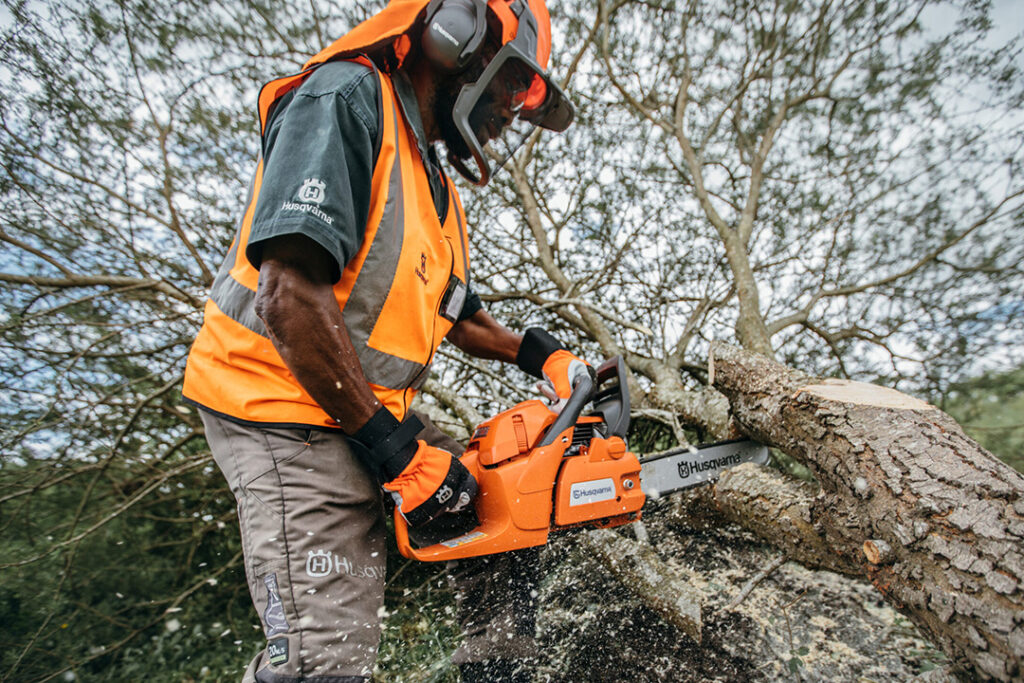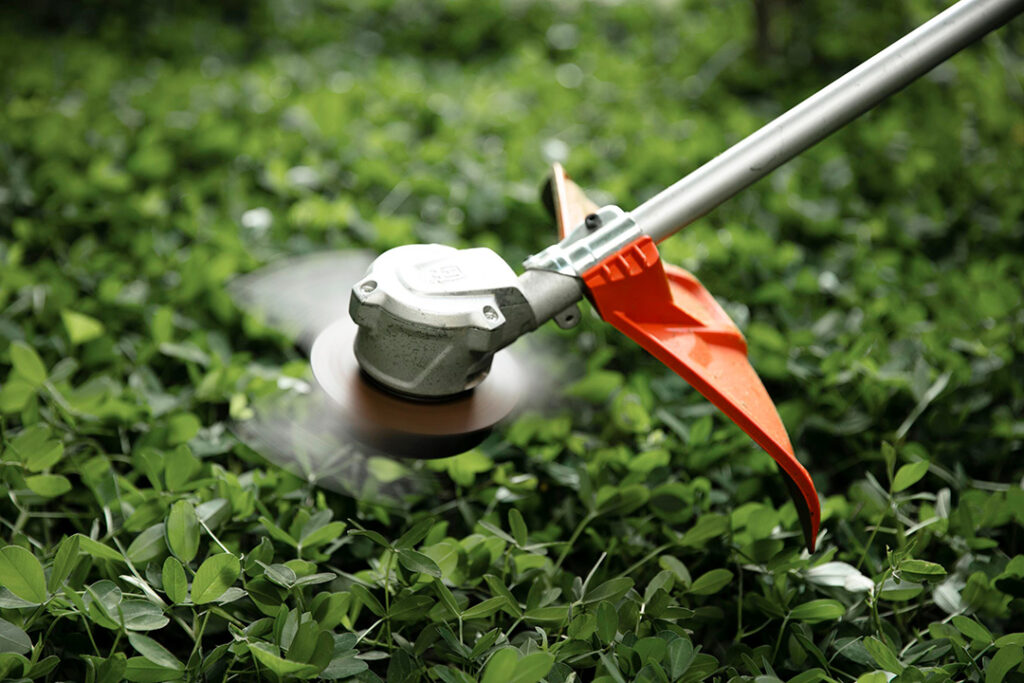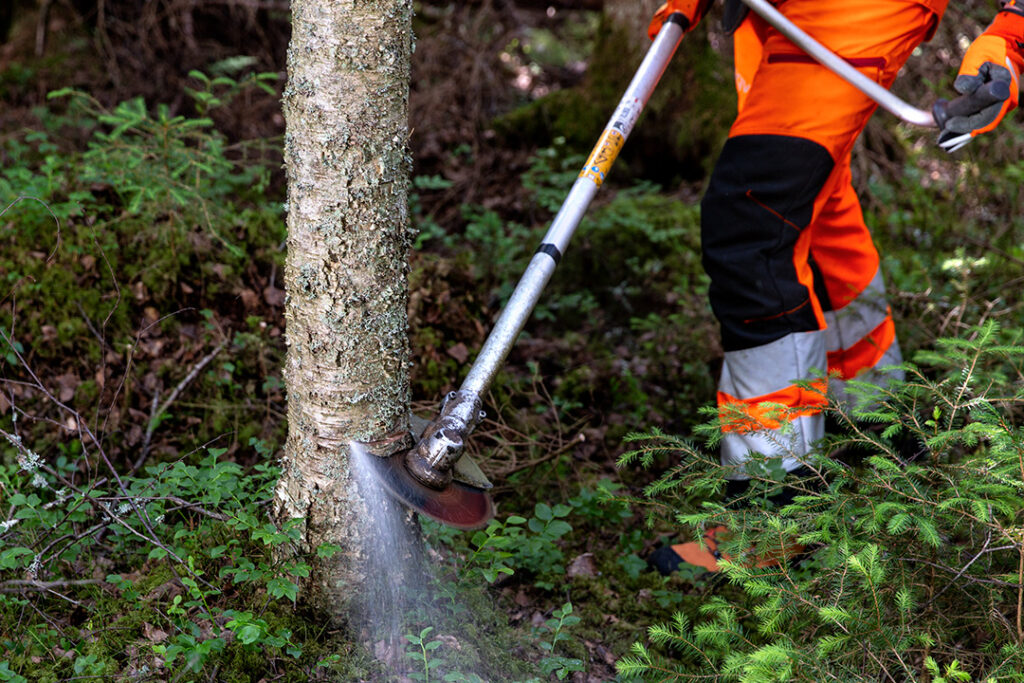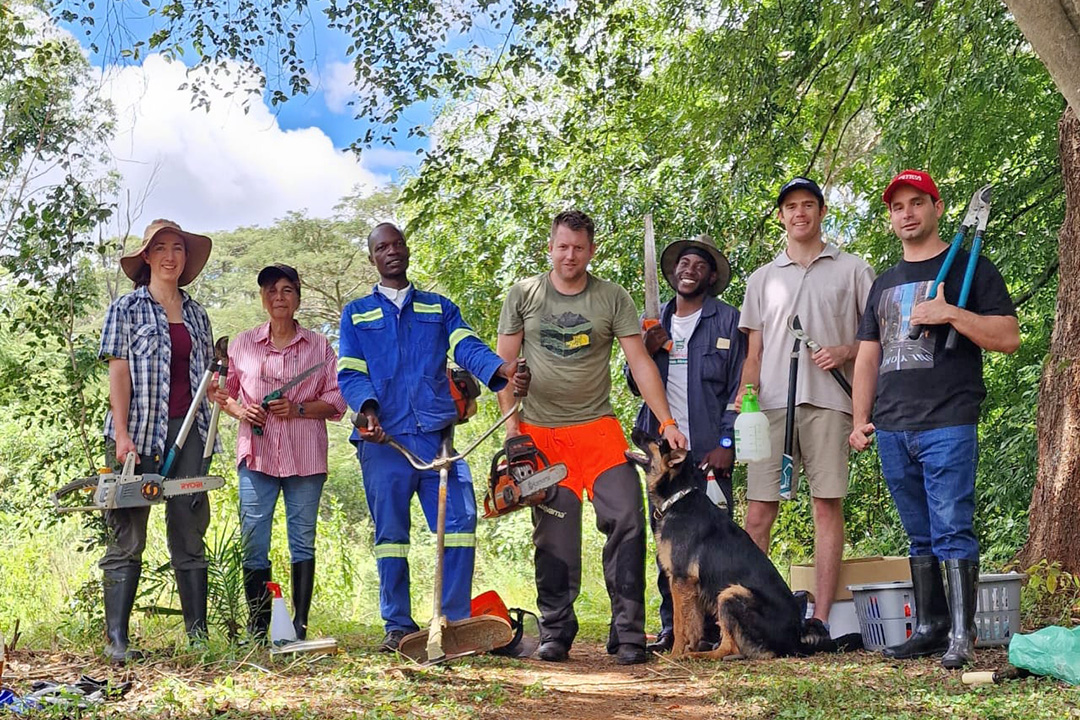Controlling invasive plant species in Zimbabwe with Husqvarna
Zimbabwe is known for its lush and diverse landscapes, but beneath the beauty lies a growing problem: invasive plant species. These shrubs, trees and weeds – which are not native to the country – represent a significant danger to the local ecology, agriculture and economy.
Cutting Edge, Zimbabwe’s provider of high-quality Husqvarna equipment, has decided to tackle this problem with key partners in the community. We have donated chainsaws, brushcutters and other cutting tools to certain organisations and community initiatives to take back control of the indigenous spaces around our country.
One such example is the Greystone Nature Preserve in Harare. The community living around this well-known haven have taken matters into their own hands and is actively clearing invasive plants from the public park. These bushes and trees often grow quicker than indigenous plants, sapping sunlight, water and nutrients to the detriment of the indigenous flora.
These plants compete with native species, diminishing biodiversity and altering environmental equilibrium. Furthermore, invasive plants can harm agricultural land, resulting in lower crop yields and even poisoning livestock, in the case of Lantana camara, which results in massive financial losses for farmers.

Greystone Nature Preserve fighting back
This idyllic little park is located in Greystone Park and lent its name to the surrounding suburb. In recent years, the nature reserve became overrun by invasive plant species that created dense, impenetrable thickets that suppressed the growth of native vegetation. While this made the park lush and forest-like, it was not ecologically right in this region of the country.
Local residents decided to tackle the problem head-on, using Husqvarna chainsaws and brushcutters to clear out the invasive shrubs and cut down foreign trees. The result was stark – the dense foliage and ground cover turned into a fairly barren tract, but over time, the indigenous species started to thrive.
The sunlight blazed down on the soil and the indigenous msasa trees had space to grow. Now, the park is recovering and slowly getting back to its natural state. Fighting the invasive species is an ongoing task; residents continuously venture into the preserve to identify and remove fast-growing plants. They also take care to prune the indigenous trees properly, promoting growth and health.

How Husqvarna equipment has helped
When it comes to combating invasive plant species, Husqvarna equipment is renowned for its exceptional quality, reliability, and effectiveness. Offering a wide range of outdoor power tools, Husqvarna has a well-deserved reputation as a brand that can tackle various challenges.
One of the key strengths of Husqvarna equipment lies in its commitment to sustainability and eco-friendly practices. The company understands the importance of protecting the environment while addressing invasive plant species, making it the perfect partner in Zimbabwe’s fight against invasives.
Husqvarna brushcutters are excellent at cutting dense vegetation, offering a powerful and efficient solution to ground-level shrubs, weeds and grass. Chainsaws are also useful for removing invasive trees, which represent a major threat to Zimbabwe’s natural environments. Furthermore, Husqvarna tools can aid in the control of invasive bushes such as Lantana camara by targeted pruning and removal.
This equipment stands out for its distinct characteristics and capabilities. Users may work comfortably while reducing their environmental effects thanks to ergonomically designed handles, anti-vibration systems, and low emissions. These characteristics are important in ensuring efficiency and safety during invasive plant management activities.

Best practices for controlling invasive plants
To effectively manage invasive plant species using Husqvarna equipment, the following best practices should be followed:
- Correctly identify invasive plant species and their growth habits.
- Choose the suitable Husqvarna tool for the plant’s density and size.
- Wear appropriate protective gear, such as gloves, safety goggles, and ear protection.
- Ensure that the equipment is in good working order and has been appropriately maintained.
- Start pruning or trimming from the plant’s base and work your way up to prevent regrowth.
- Follow local restrictions and dispose of invasive plant material properly.
- By adhering to these recommended practices, users can increase the productivity of Husqvarna equipment and accomplish successful invasive plant control.
The issue of invasive plant species in Zimbabwe cannot be ignored, but Husqvarna equipment provides a powerful and reliable solution. We must act quickly to preserve our natural landscapes, maintain the status quo in our ecosystems, and protect the local economy. Contact Cutting Edge today for more information, equipment purchases, or professional advice on our products.
___
Cutting Edge is the leading supplier of Husqvarna products in Zimbabwe. We bring you the best tools in the business with world-class service and after sales care. Follow us on Facebook and Instagram for the latest news and product offerings from our brands.

